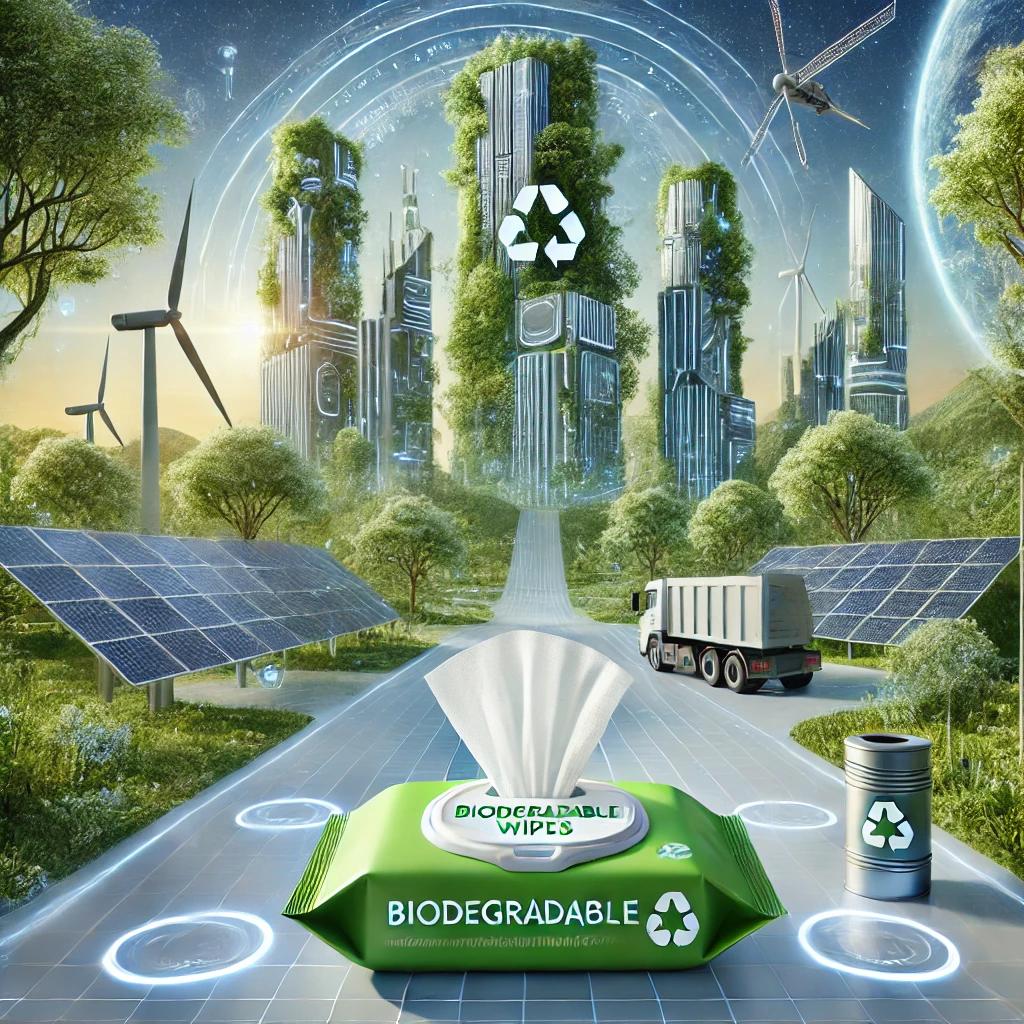
"Biodegradable Wipes: Shaping a Sustainable Future with Eco-Friendly Innovation"
Introduction
As environmental awareness grows, consumers are increasingly seeking sustainable alternatives to everyday products. One of the rising stars in the eco-friendly movement is biodegradable wipes. These versatile, single-use wipes have gained traction as a cleaner alternative to traditional wipes, which often contain plastic and synthetic fibers, leading to long-lasting waste in landfills. This article explores the trends and innovations in biodegradable wipes, their environmental benefits, and the growing demand for sustainable hygiene solutions.
1. The Environmental Benefits of Biodegradable Wipes
Traditional wet wipes have long been a staple in households, but they come with a significant environmental cost. Many wipes contain plastics or synthetic materials that take hundreds of years to break down. Biodegradable wipes, on the other hand, are made from natural fibers like cotton, bamboo, or wood pulp. These materials decompose within months, reducing the overall waste in landfills and oceans. Additionally, biodegradable wipes often use plant-based or water-soluble chemicals, making them safer for the environment compared to wipes that contain harsh, non-biodegradable chemicals.
2. Market Trends: The Growing Demand for Sustainable Hygiene Products
The demand for biodegradable wipes has surged in recent years, driven by eco-conscious consumers and regulatory pressures. According to a 2023 market report, the global biodegradable wipes market is expected to grow by 11% annually, reaching $3.5 billion by 2028. This surge is partly due to increasing awareness of plastic pollution, but also due to legislative changes. For example, the European Union’s Single-Use Plastics Directive, enacted in 2021, aims to reduce plastic waste by banning certain single-use plastics, including non-biodegradable wet wipes.
3. Innovative Uses of Biodegradable Wipes Beyond Personal Care
While baby wipes and facial wipes dominate the biodegradable market, innovative applications are emerging. Industries such as healthcare, hospitality, and even the food sector are adopting biodegradable wipes for various uses. In healthcare, for instance, biodegradable disinfectant wipes are gaining popularity due to their environmental benefits without compromising on hygiene standards. In the hospitality industry, eco-friendly cleaning wipes are used for surface cleaning to reduce the use of harmful chemicals and plastic waste.
4. Key Challenges in the Biodegradable Wipe Market
Despite their growing popularity, biodegradable wipes face challenges. One issue is cost: biodegradable wipes can be up to 50% more expensive than traditional wipes due to the higher cost of natural materials. Additionally, consumers often question the true biodegradability of wipes, as some products are only biodegradable under specific conditions, such as industrial composting. Clear labeling and third-party certifications, such as those provided by the Biodegradable Products Institute (BPI), can help build consumer trust and promote wider adoption.
5. The Future of Biodegradable Wipes: Trends to Watch
As consumer demand and government regulations continue to push for sustainable solutions, the future of biodegradable wipes looks promising. Innovations such as flushable biodegradable wipes that break down in water are becoming more prevalent. In addition, companies are exploring the use of bio-based plastic alternatives, like polylactic acid (PLA), in the wipes market. Another trend to watch is the rise of reusable wipes, which can be washed and reused multiple times, further reducing waste.
Relevant Statistics
- The biodegradable wipes market is projected to grow at an annual rate of 11%, reaching $3.5 billion by 2028.
- A 2023 survey found that 65% of consumers are willing to pay more for sustainable hygiene products.
- Traditional wet wipes can take up to 100 years to decompose, whereas biodegradable wipes typically break down in 6 to 12 months.
Conclusion
Biodegradable wipes represent a vital step toward reducing waste and promoting sustainable consumer habits. As market trends show, the demand for eco-friendly alternatives is on the rise, driven by both environmental concerns and regulatory changes. Though challenges such as higher costs remain, the innovations in the biodegradable wipes sector suggest a future where sustainability and convenience can coexist. Consumers and industries alike are beginning to embrace these changes, setting the stage for a cleaner, greener future.
WaterWipes Plastic-Free Original Baby Wipes
"Keep your baby's skin safe while protecting the planet with WaterWipes! Made with 99.9% water and zero plastic, these gentle wipes are essential for eco-conscious parents. Get yours now and give your little one the ultimate care!"Best Flushable Wipes for On-The-Go Hygiene
"Stay fresh and confident wherever you go! These flushable wipes offer unbeatable convenience for quick, hygienic clean-ups. Perfect for busy days and travel. Stock up now and never worry about hygiene on the move again!"Clean Conscious Unscented Wipes
"Clean up with care, without harsh chemicals or hassle. These unscented, eco-friendly wipes keep you feeling refreshed while respecting your skin and the environment. Order yours today and feel the natural clean difference!"The Best Flushable Wipes for a Fresh Feel
"Feel refreshed, anytime, anywhere! These flushable wipes are designed to give you a clean, comfortable feeling whenever you need it. Don’t miss out on the freshness — order now and upgrade your hygiene routine instantly!"
